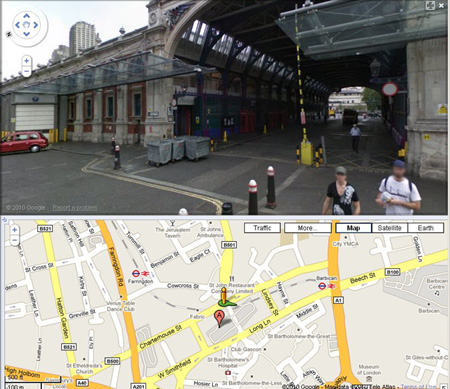72. Smithfield - page 349
72. Smithfield - 349
Milgrim and Fiona meet with Special Agent Whitaker outside London's Smithfield Market.
page 352
"Okay," said Fiona. "I've got the keys to the Yamaha. Call her. I'll need to explain where she's meeting us."
"Where is she meeting us/"
"Smithfield">>>
This time, removing the hairspray helmet, which he was starting to accept as an inherent and not entirely unfair cost of riding with Fiona, and almost, possibly, to enjoy, Milgrim found himself beneath a sort of deep, glassy, probably plastic awning, slung horizontally from above, running the seeming length of a very long building, apparently the only one on this very long block, ornate to American eyes but probably leanly functional to its Victorian builders. Sections of brick alternated with narrower sections of grey cement. A pair of obvious couriers sat on their bikes, the big Hondas Fiona called maggots, about twenty feet away, smoking cigarettes and drinking from tall cans.
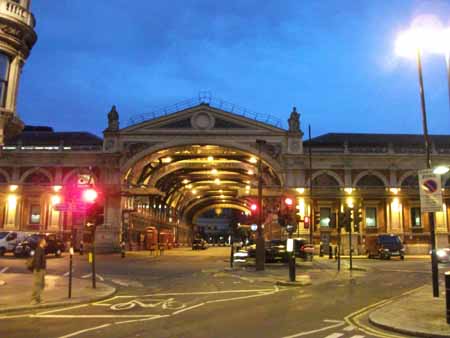
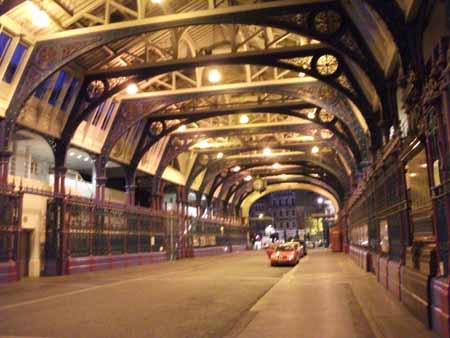
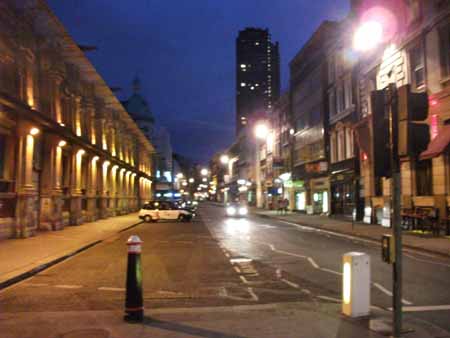
William Gibson cites this article in the end credits of the UK hardback edition:
Artful Dodgers, from the February 2009 issue of Motorcyclist, by Mark Gardiner
For a while, Chasbikes only worked on Honda's workhorse CX500 V-twin, which London's couriers affectionately call "maggots." Nowadays, however, the shop is crammed with slightly newer models also favored by working riders. Hanging around in here you quickly realize that most couriers care not a whit for style. What they want is bulletproof reliability first and foremost, preferably with a shaft drive. So would you if you rode 50,000 miles a year, in all weather, in one of the world's most congested cities.
[...]
In Dickens' time, Smithfield Market was London's live cattle market. While they no longer drive cattle into central London, it's still the city's major wholesale meat market. The building covers an entire city block. Like most London markets, it's only open one day a week--in this case, Monday. The rest of the week, traffic in and out of the building is minimal, so there's room to park bikes and loiter, out of the rain, under the awnings that cover the market's loading docks.
The cafe (pronounced caff, by the way, despite the way Microsoft Word obligingly inserts an accent over the "e") across the street makes what one courier told me was "...the best tea in London, mate, because they still use loose leaves, not bags." Shelter from the rain; cheap, plentiful, hot tea; quick access to the law and banking offices of The City. Smithfield is an ideal habitat for London's motorcycle couriers.
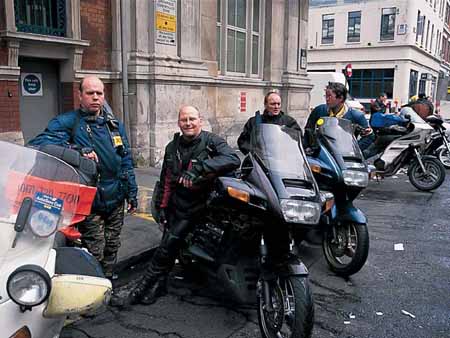
See also:
http://www.smithfieldmarket.com/
Smithfield is located within the Square Mile of the City of London bordered on one side by Charterhouse Street and on another by Farringdon Road.
[...]
Smithfield - or London Central Markets - is not just the largest EU approved wholesale meat market in the country, but the oldest too.
Originally known as Smoothfield, it was a large open space just outside the city boundaries on the edge of St Bartholomew's Priory. (The name meant a smooth plain - but the word eventually became known as smith, a corruption of the Saxon word smeth, which meant smooth).
In the Twelfth Century it was used as a vast recreational area where jousts and tournaments took place. By the late Middle Ages the area had become the most famous livestock market in the country.
There was also a murkier side to the area, because from the early Thirteenth Century it was used as a place of execution for criminals. Wat Tyler, the leader of the Peasants' Revolt, was executed here, as was Scottish hero William Wallace and of course, it was the location of Bartholomew Fair - three days of merrymaking, dancing, selling and music which over the centuries became the most debauched and drunken holiday in the calendar. Even so, it lasted almost 700 years before it was eventually closed in 1855.
